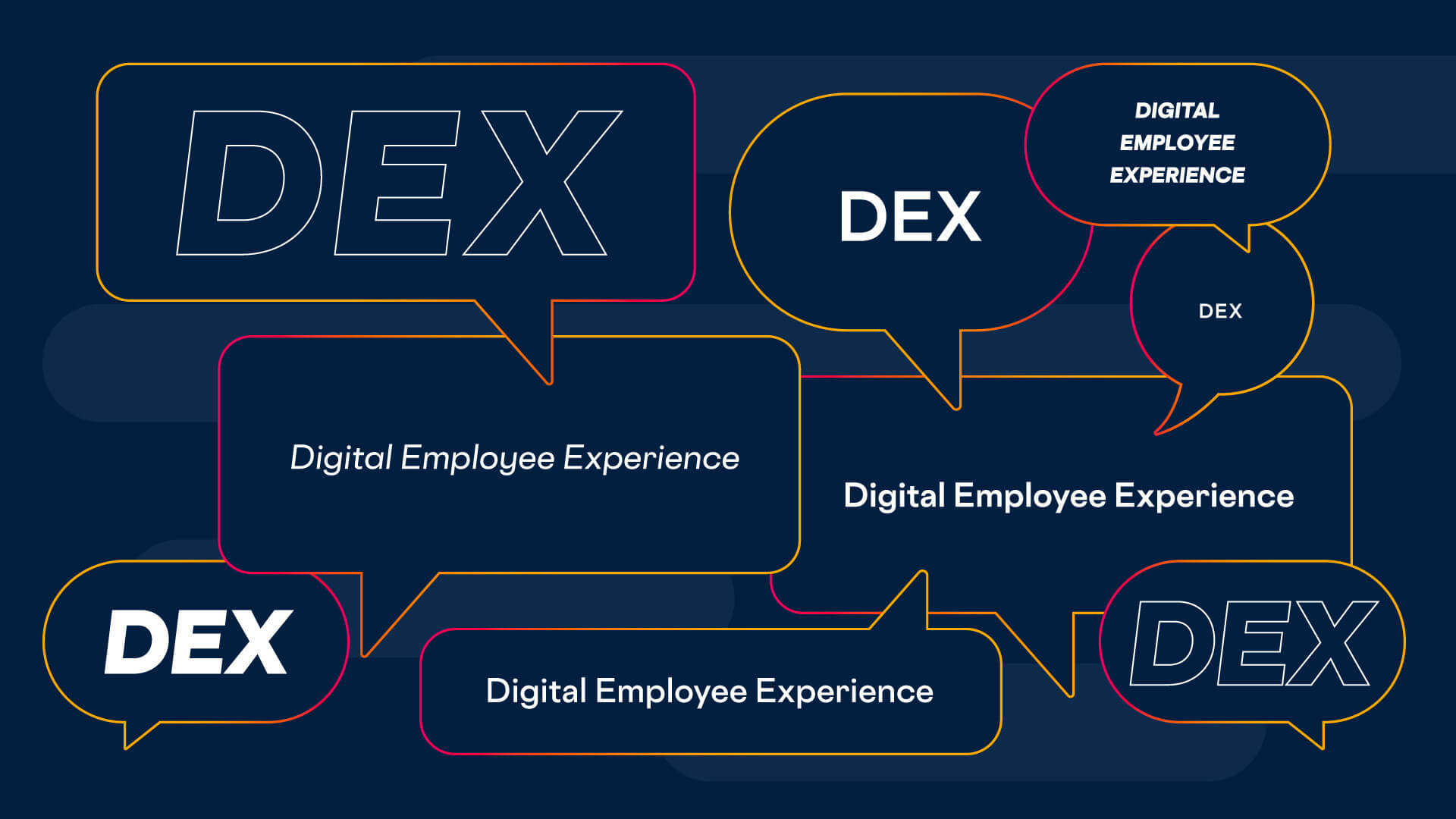
When you think about enhancing the employee experience, you might envision bonuses, recognition, mentorship, and maybe perks like happy hours and Ping-Pong tables.
When you think about enhancing digital employee experience (DEX), you likely consider improved login processes, fewer technology hoops to jump through, more intuitive applications, and less lag time.
You know what doesn’t typically come to mind when considering either EX or DEX?
Compliance.
The word alone is enough to elicit a seriously unpleasant combination of nerves and boredom.
“Forget happy hour; I want to focus on compliance!” said no employee, ever.
“Security” is another element that ranks low on a list of desirable experience enhancements.
Your password must now include 27 unique characters, your grandmother’s social security number, and the batting average of the 1927 Yankees—and you’ll need to change it again in 12 hours.
Painfully accurate jokes aside, DEX is a hot topic right now—and for good reason. Gartner describes DEX as “a discipline that focuses on how technology affects the overall employee experience (EX).”
Given the rapid uptick in dispersed endpoints and employees in the current workforce, DEX is everything. The problem: discussions of DEX miss the point. DEX certainly can be about login times, fewer hoops, intuitive applications, and less lag time. But without nailing down the fundamentals first, all those benefits are vulnerable.
And what are the fundamentals of DEX? Brace yourself: compliance and security.
There’s a reason employees cringe at these two concepts: we associate compliance with endless checklists and tedious rules, and security with cumbersome, time-sucking vortexes of authentication, error messages, and mandatory annual security training.
In modern business operations, compliance and security have been completely contradictory to a desirable DEX.
What if they didn’t have to be?
What if compliance and security happened seamlessly in the background, taking up neither time nor brain space from employees?
What if compliance and security were automated, scanning and detecting problems infinitely faster and more thoroughly than a human could?
What if any issues were not only uncovered at warp speed, but remediated before the employee even knew there was an issue in the first place?
We don’t have to guess. We already know that operational capabilities like this would eliminate hurdles, drastically reduce downtime, and make for a significantly more productive and enjoyable digital experience.
The key is to build security (and, by extension, compliance) directly into DEX—not as a side quest or afterthought, but as a fundamental element of the DEX platform.
It would help clear the proverbial pile of trouble tickets off the desks of overburdened IT workers.
It would bolster defenses against threat exposures.
It would make it faster and easier for employees to do their jobs, without compromising security or compliance.
It would improve consistency and enforce best practices without necessitating micromanaging.
If you’re investing in DEX initiatives that don’t have compliance and security at the core, think of it like this: your employees are in a boat that’s full of holes and starting to sink. You keep shelling out money to give them pool toys and drinks with little umbrellas. Right now, they don’t need shiny extras. They need a boat that floats. The drinks and toys will certainly be appreciated, but only once they’re securely afloat and able to keep sailing forward.
Start with the fundamentals.
That’s the idea behind ControlUp for Compliance, a real-time scanning, detection, and remediation solution designed to seamlessly shore up security for endpoint devices—no unnecessary hurdles or interruptions required. By continuously and autonomously spotting and resolving endpoint vulnerabilities and weak security configurations, ControlUp for Compliance reduces endpoint management complexity and empowers IT and cybersecurity teams to respond to security threats faster.
The core of ControlUp for Compliance is true, real-time data. Although ControlUp for Compliance collects inventory at defined intervals, when a zero-day exploit is detected, ControlUp for Compliance can show how many devices are exposed to the vulnerability in real-time, letting you understand the risk. Combine that with actionable insights, you not only have the right data but you have the ability to act on it immediately (or, better yet, let the system act on it for you).
The blend of complete visibility and automated detection and remediation is a powerful weapon against threat actors. It’s poised to become a disruptive force in the costly world of defense and endless security toolsets, as IT and security leaders realize that the solution doesn’t have to be more complicated — it just has to be better.
By focusing on security, a solution like ControlUp for Compliance lets IT teams focus on value-added initiatives instead of troubleshooting. (In our boat metaphor, IT teams are the ones frantically trying to bail water out of the boat.) A security-based solution lets employees do their best work without interruptions, without risking security issues, and without being bogged down by complicated best practice specifications.
With security as the foundation for DEX, your proverbial boat can go at the speed you want, in the direction you want, with ease. Here’s to smooth sailing.